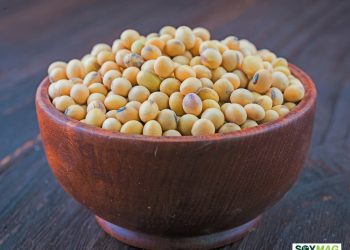In the fast-paced world of commodity trading, there’s a single number that reveals more about the soy oil value market than any other: the crush margin. It’s the pulse of the processing industry, a simple yet powerful metric that tells you in an instant whether it’s more profitable to grind a bushel of soybeans into its core components—meal and oil—or to just sell the whole bean. For anyone from a seasoned trader to a farmer at the local elevator, understanding this value is the key to making smarter, more profitable decisions.
Crushing It: A Look Inside the Soy Oil Value
At its core, the crush margin is a simple equation:
Crush Margin = (Value of Meal + Value of Oil) – Cost of Raw Soybeans
But the magic is in the details. A 60-pound bushel of soybeans doesn’t just turn into meal and oil. It yields a specific ratio: roughly 44 pounds of soybean meal and 11 pounds of soybean oil. The rest, a small amount of waste, is negligible.
To get to the margin, we convert everything into a single currency: dollars per bushel. This is where the conversion magic happens:
- Meal Value: We take the price of soybean meal per ton and multiply it by a conversion factor of 0.022.
- Oil Value: We take the price of soybean oil per pound and multiply it by 11.
Add those two values together, subtract the cost of a bushel of soybeans, and you have your crush margin. A positive number means the processing plant is in the money; a negative one, and they might as well shut down the machines.

The Two Engines Driving the Value
The crush margin isn’t a single, fixed number. It’s a tug-of-war between the values of its two products, each driven by its own unique market forces. To truly understand the crush, you have to understand the engines that power it.
Soybean Meal: The Protein Powerhouse
Soybean meal is the workhorse of the livestock world. It’s the most widely used protein source in feed for chickens, pigs, and cattle. So, its value is directly tied to the health of the global livestock industry.
- Global Appetite: As the world’s population grows and diets change, the demand for meat, eggs, and dairy products increases, fueling a steady need for soybean meal.
- Animal Health: A disease outbreak, like African Swine Fever, can decimate a herd and, in turn, crush demand for meal, causing prices to plummet.
- Alternative Feeds: The price of a rival protein source, like dried distillers’ grains (DDGs), can also impact meal’s value. If a cheaper option is available, demand for meal could soften.
Soy Oil Value: From Kitchen to Combustion
Soybean oil has a dual identity: it’s both a key ingredient in our kitchens and a critical component in our fuel tanks. This dual role is what gives its price so much volatility.
- The Food Factor: Soybean oil is a staple in everything from salad dressings to fried foods. Its value here is driven by consumer trends and competition from other vegetable oils like palm and canola.
- The Biofuel Boom: This is the game-changer. Government mandates and the push for cleaner energy have made soybean oil a primary feedstock for renewable diesel. When a new biofuel plant opens or when crude oil prices rise, the demand for soybean oil can skyrocket, pulling its price—and the entire crush margin—up with it.

A Market Compass for Better Decisions
Understanding the crush margin isn’t just an academic exercise. It’s a tool that can guide your strategy, whether you’re a processor, a trader, or a farmer.
- For the Processor: The crush margin is their profit signal. A wide margin means it’s time to ramp up operations, while a tight one tells them to hold off.
- For the Trader: The crush margin is a trading strategy in itself. Savvy traders place “crush spreads,” betting on whether the combined value of meal and oil will increase or decrease relative to the cost of the raw beans.
- For the Farmer: This is where it gets really interesting. A strong crush margin indicates that processors have a healthy appetite for soybeans. This typically translates to stronger local basis bids, giving farmers more profitable opportunities to sell their crop. It’s a key indicator of local demand, even if you’re not a trader.
By keeping an eye on the crush margin, you’re not just tracking a number; you’re following the pulse of the soybean market, understanding the forces that drive it, and giving yourself a clearer path to better decisions.









